[stationery letterhead:
“Leech, Leech & Sutton
Barristers, Solicitors, Etc
Leech, Leech, Sutton & Hamilton
Notaries, Conveyancers, Etc.
J. HILLYARD LEECH, M.A. LLB. K.C.
ERNEST T. LEECH, B.A.
F.J. SUTTON, LLB.
THOS. HAMILTON.”]
306 McARTHUR BLDG.
WINNIPEG, CAN.
21st.December.1918
Statement of Charles Billington
No 150803. originally 79 Bat.
I was in Lieut Hart Leech’s plattoon being platoon 12. that is the fourth platoon in ‘C’ company. I was with him in the Battle of the Somme at the taking of Courcelette and Mouquet farm.
We went in from the chalkpits Just outside of ‘K’ [dum?] it was all artillery nearly all 18. pounders the heavies were further back on the Albert road. after we left the Chalkpits we went to ‘K’ dump. This was sheltered by the contour of the country. We there gathered ammunition and bombs on night of 14th. We then went to the support trenches. There was nobody holding these trenches we privates had no idea of the lay of the trenches before us or what we were to face. Except that we knew only we were going up to the front. We were told only after we got into the support that we were to attack. We then made our advance across death valley being a depression completely exposed named on account of the number of Australions and English killed there in previous efforts to take Mouquet farm and took the first line German trenches afterwards our first line. From there we prepared to attack the main German line trenches.
The attack of our platoon was made in two waves of a section each. Lieut Leech was leading the attack and was out ahead of the first wave I was in the fourth section or last wave. The platoon sergent was in the rear.
I did not see Lieut Leech until after he was killed.
This was the worst engagement of the war. I was in Vimy Ridge battle and lost my left arm there but for frightfulness it was nothing like Moquet farm. Our platoon went over full strength but only nine of us survived By the time our section went over the [?] were dropping all around. We had everything coming over at us We were up in a sap. We had raining on us Bombs, Shells, Shrapnel, Coalboxes, Whizbangs, Minniewafer, Cylindical Sticks (Potato Mashers by nick-name) Machine gun, Sniper and ordinary rifle fire. We used the tank for the first time but none helped us. We could see only a few feet although it was a clear sunny morning. Smoke fire dust flying splinters shrapnel stone chalk dust and debe of every kind filled the air The flashes of red tongue of fire of exploding shell were everywhere arrond me dashing through the inky black smoke which enveloped us Our own artillery was working hard behind us. the Germans in Front. The din was as if the earth was being blown to pieces. We soon got mixed up in the dark. I saw Lieut Stuart. he was bleeding badly. He had a soldiers rifel and was shooting Germans advancing. He told us that there was no use in trying to go farther against the like of that, that we were to take cover and save ourselves. I do not know where Lieut Leech was except that he went out ahead. our officers all went down except Major Caswell who was not in the fight. I saw Lieut Casey lying dead in a sap. The Germans turned on a barrage in death valley and we could not get up our supports, we reformed a line to hold it against the advancing Germans, we had four machine crews but the men were mostly all killed. In one crew I saw only one man was left. The trenches were all battered out and only these holes left.
I saw S’gt Kirk wounded, I heard he had helped to carry Lieut Leech back.
Some of our fellows got well back with bullet wounds only to be torn to pieces with artillery behind our line.
We had to hold the line that night when the 2nd C.M.R.’s got through and relieved us.
Late in the afternoon I saw Lieut Hart Leech lying on a stretcher in a sap with wounded and dead. The live ones were moaning, I could not say if he was dead. We burried our men by covering them up in shell holes. We carried our wounded to the dressing station in the chalkpit before coming to death valley (on the side of the valley next to where we were) we got there across death valley later that night to a little push car railway.
I think all the officers were carried out and buried (I heard so) in an adjacent cemetry
[M Marshall?] who [?] with [?] Billings says he saw Hart when Major Coswell Came up. Marshall was wounded at that moment and thrown down. he saw Maj. Coswell pull out a large piece of metal about 18” the whole side of a shell out of the front part of his body. Hart spoke to him. Coswell gave a couple of morphine tablets, [One?] hour after I came across him again near same place. I was crawling back on hands and knees. I looked at Hart His face was a dull brownish grey. I put my hand on his head It was warm but I know he was dead. His coler told me so it was slate coler or blueish grey.
[M?] Marshall says he helped to pick Hart up after his first wound, He says I stopped down to pick him up, he put his arm around the back of my neck I could not quite lift him pte Diggle a stretcher bearer helped me. We put him in a stretcher Sgt Kirk platoon sgt came up there and helped to carry him back we put the stretcher down in the sap, I helped to bandage him, a piece of his lung [?] was hanging out between his ribs on the right side we dragged him down into the sap. He was lying with a rifle under him. I went to move it out. He said not to bother he felt no pain there. He said the pain was in his groins. I think he was hit from a sniper below and was shot up through the body. [?] could happen. He was high up and a sniper at one side in a shell hole below would get him as he stooped [?] going over probly in [near?] side. I believe what I saw was where the bullet came out. That the bullet was an explosive one.









